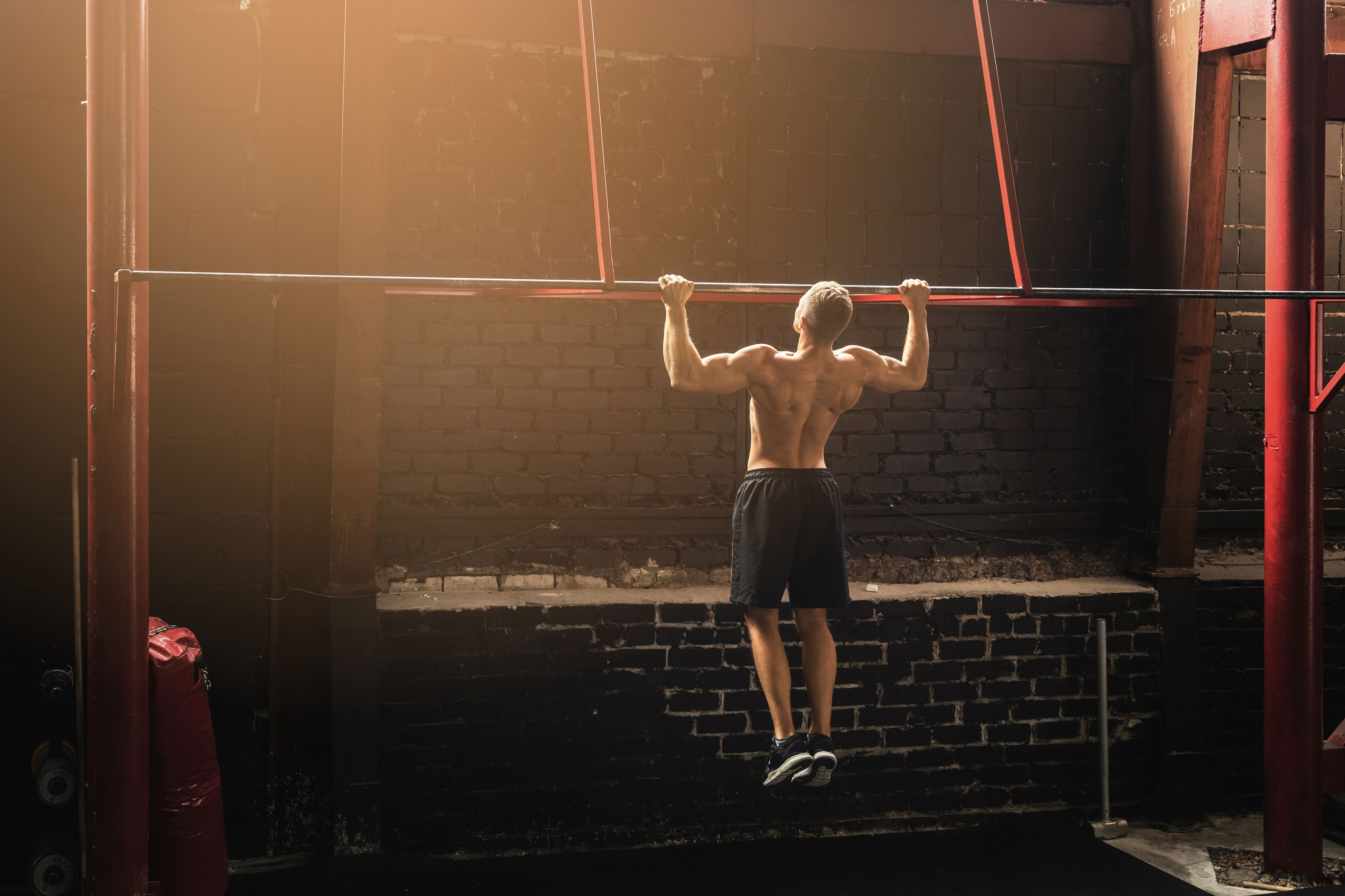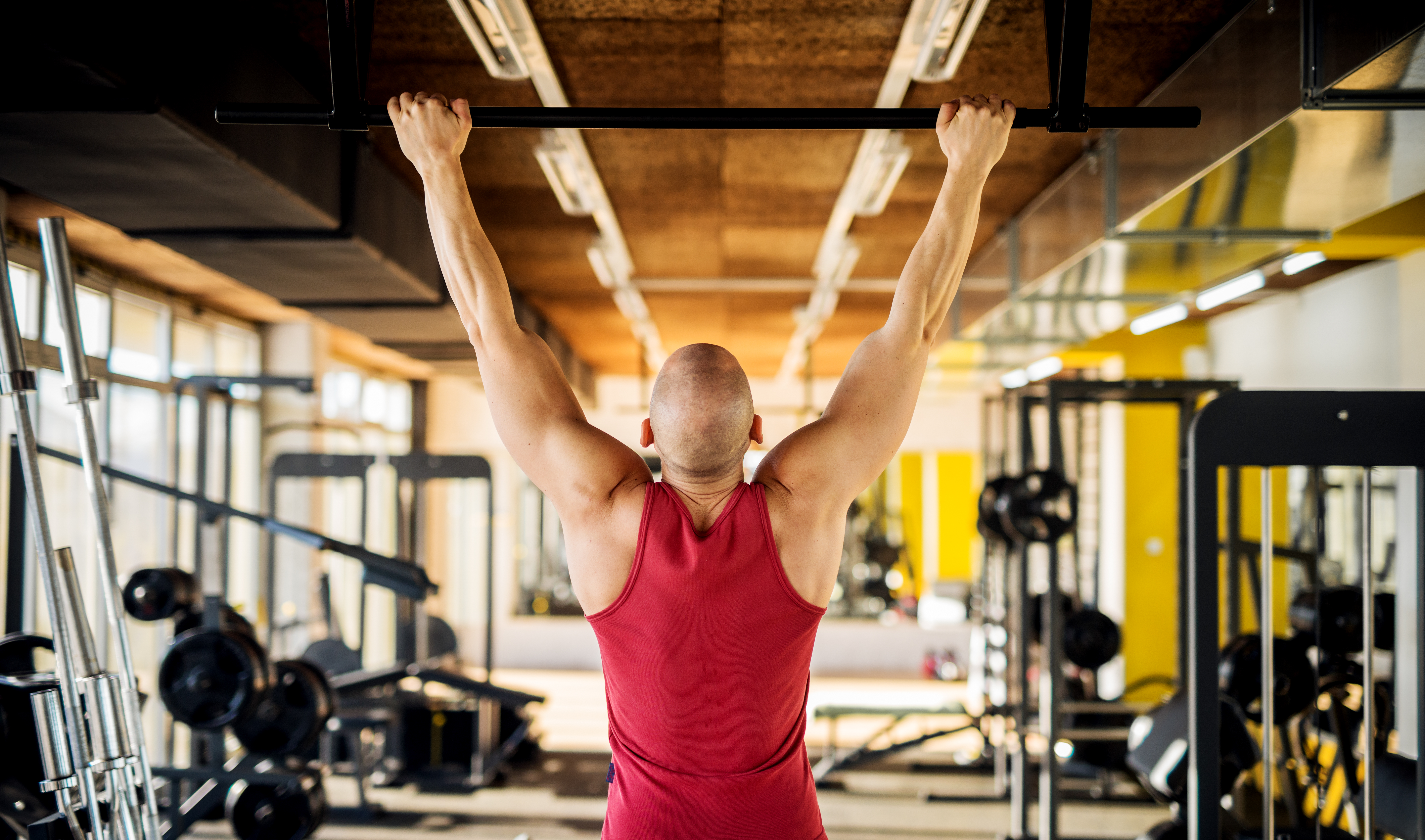Whether you’re a newbie or seasoned lifter looking to bust through a plateau, it’s easy to see the appeal of performing more pull-ups
Pull-ups are one of the finest exercises around – a true test of bodyweight strength and fitness. Although they predominantly work your lats, the benefits don’t end there. Your forearms and biceps are also heavily recruited, as are the smaller muscles in your back such as the infraspinatus.
How to perform a standard, wide grip pull-up:
- Grip your pull-up bar with hands around shoulder-width apart
- Take a pronated (palms facing away) grip
- Straighten your arms and adopt a slight bend in the knees
- Retract your shoulder blades
- Pull your body up until your chin reaches the bar, contracting your lats all the way
Pull-ups are a difficult move and it’s easy to hit a stumbling block, regardless of whether you can hit five or 50. If that’s the case, here are a few methods to help you perform more:
Train all angles:
A wide grip pull-up is not the only option available. To get strong in all areas, switch your grip up. An supinated (underhand) grip still maintains tension on your lats, but is also the best for bicep-building.
A narrow neutral grip, with palms facing inwards, also works the lats, forearms and biceps, but places particular stress on the brachialis, the muscle which adds thickness to the side of your upper arm.
You can even take to gymnastic rings to add a new element to your training – the unfixed nature of the rings calling on more muscle fibres.
https://www.instagram.com/p/BmyWzpbBGD3/?taken-by=alexroberts92
Four-second negatives:
Focus on the lowering part of the exercise, instead of the actual ‘pulling up’ bit.
To do this, find a box, step or ladder that reaches the top of the pull-up bar. Climb onto the top, and then lower yourself down to the ground in a slow controlled fashion, over the course of four seconds. Still contract all the target muscle groups as you lower.
Dead hangs:
If you’re struggling to perform bodyweight pull-ups, hang at the bottom portion of the lift, where your lats are feeling the biggest stretch. This shouldn’t be a complete hang – keep your shoulder blades slightly retracted.
Aim to hold this dead hang position for a minute minimum. Repeat for 3-5 rounds for even greater returns. The stress this places your muscles under will force them to adapt to a new stimulus, enabling you to eventually perform more pull-ups.
Brace yourself:
Tensing your abdominals isn’t just for posing in front of the mirror. Your entire body moves as a unit, and your core strength is responsible for a large portion of this.
A big factor in being able to move your bodyweight around or up to a pull-up bar is core strength. Whenever you’re performing pull-ups, make a point of keeping your abs engaged at all times.
Read more on how psychology can help you achieve your fitness goals











































